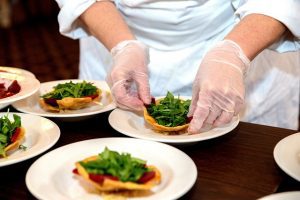Food prices in hospitality surge again as supermarket prices ease

Costs of global food commodities continued their downward trend in June, averaging 23.4% below the peak reached in March 2022
Inflation as measured by the CGA Prestige Foodservice Price Index rose again to 22.6% year-on-year in June—close to the record high of 22.9% in December 2022.
This in sharp contrast to supermarkets, where prices increased by just 0.4% during June, month-on-month inflation in the Index was more than five times higher at 2.2%.
The large difference is caused by a complex mix of factors. Retail food markets are more consolidated than hospitality, with the top ten supermarkets owning 75% of the market, and they are able to exploit their scale with sophisticated contracting and controlled distribution. In addition, the government has threatened supermarkets with price caps if inflation does not fall.
Conversely, hospitality buys primarily through multiple wholesalers, which dissipates scale, creates diverse ranging and has less contractual price protection. Upstream cost improvements can also take longer to feed through and are subject to continued volatility such as the recent failure of the UK grain corridor arrangements. Finally, suppliers, squeezed by rising costs and smaller margins will be seeking some respite as their inbound costs ease.
Costs of global food commodities continued their downward trend in June, averaging 23.4% below the peak reached in March 2022. However, conditions for producers in the UK continue to be less benign, with farming input costs such as energy, feed and fertiliser remaining high and near-full employment levels tightening the labour market. Climate vulnerability on imported foods, rising interest rates and additional costs of post-Brexit trade all continue to feed through into prices.
Shaun Allen, CEO of Prestige Purchasing, said: “Food prices in the UK hospitality sector continue to increase at around 2% per month. This rate of increase is likely to be close to a tipping point, where deflationary factors should start to compensate for the currently dominant inflationary pressures. The exact timing of this tipping point though remains uncertain whilst the factors described above remain volatile. We strongly advise operators to ensure that buying skills, levels of resource and quality market data feature heavily in their operational plans for the foreseeable future.”
James Ashurst, client director at CGA by NIQ, said: “Hospitality has been besieged by food and drink price inflation for many months now, and it’s frustrating to see another jump at a time when retail price rises are slowing. Alongside relentless pressure on energy bills, labour costs and consumers’ discretionary spending, it leaves some businesses extremely vulnerable through no fault of their own. Sales remain solid and people remain eager to eat and drink out when they can, but trading conditions are going to be tough for some time to come.”
The exclusive Foodservice Price Index is jointly produced by Prestige Purchasing and CGA by NIQ, using foodservice data drawn from 7.8 million transactions per month. It contains myriad insights and information pertinent to the foodservice sector and is essential reading for anyone seeking to keep ahead of price trends and understand why they occur. More information on specific categories is available on a subscription basis.
For further information, contact Prestige Purchasing on 01908 222678 or stuart.read@prestige-purchasing.com.








